Introduction:
Vacuum forming, a versatile and widely employed manufacturing process, plays a pivotal role across diverse industries. By utilizing vacuum pressure and molds, this technique transforms flat molded plastic sheet into three-dimensional objects of practical and aesthetic value. This article embarks on an insightful journey, delving into the intricate world of vacuum forming, with a specific focus on comparing two prominent thermoplastics: PETG (polyethylene terephthalate glycol) and PVC (polyvinyl chloride). As we delve into the nuances of these materials within the vacuum air pressure forming framework, we unveil the distinctive attributes that guide their selection for a myriad of applications.
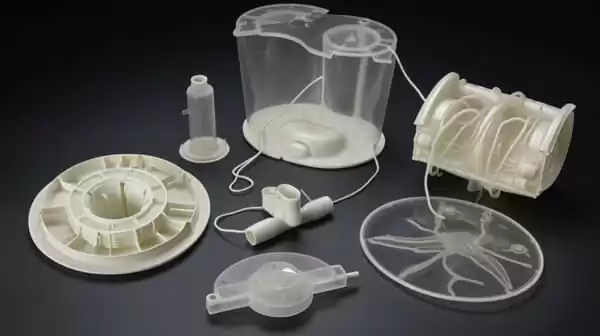
II. Understanding PETG in Vacuum Forming
PETG, an acronym for polyethylene terephthalate glycol, emerges as a formidable contender in the realm of vacuum forming, distinguished by a range of remarkable properties that define its performance. This section delves into the characteristics of PETG and its role within the vacuum forming process, shedding light on both its strengths and limitations.
1. Transparency and Clarity:
PETG boasts exceptional optical clarity, rendering it an optimal choice for applications where visual transparency is paramount. When subjected to the vacuum forming process, PETG retains its inherent clarity, resulting in finished products that showcase the content within, making it a preferred material for retail displays, product packaging, and various consumer items.
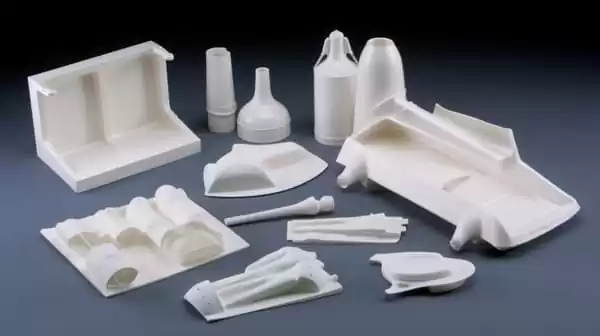
2. Impact Resistance and Durability:
One of PETG's notable attributes lies in its robustness and ability to withstand impacts. This resilience against external forces makes it an attractive candidate for vacuum forming applications that require durability, ensuring the longevity of plastic parts in the final products. PETG-formed items can endure handling, transportation, and usage without succumbing to deformation or damage.

3. Chemical Resistance and Suitability for Food Packaging:
PETG's resistance to chemicals, including moisture, contributes to its suitability for applications where exposure to varying environmental conditions is a concern. This characteristic is especially valuable in the context of food packaging, as PETG-formed containers can effectively safeguard consumables from contaminants and maintain the integrity of the contents.
Advantages of PETG in the Vacuum Forming Process:
Consistent Clarity: PETG's transparency remains unaffected throughout the vacuum forming process, ensuring the preservation of visual aesthetics.
Durable Output: The material's impact resistance results in robust and enduring vacuum-formed products.

Versatile Applications: PETG's chemical resistance and suitability for food packaging broaden its application horizon to encompass plastic materials in various consumer and industrial domains.
Limitations of PETG in Vacuum Forming:
Temperature Sensitivity: PETG possesses a lower forming temperature compared to some alternatives, potentially limiting its use in applications that require exposure to higher temperatures.
Rigidity Considerations: While PETG demonstrates flexibility and impact resistance, its rigidity might not match that of other materials, impacting certain applications that demand higher structural stability.
By comprehending the unique attributes and limitations of PETG within the vacuum forming process, manufacturers can make informed decisions to harness its strengths for specific applications while navigating its constraints effectively.

III. Exploring PVC in Vacuum Forming
In the dynamic realm of vacuum forming, polyvinyl chloride, more commonly known as PVC, emerges as a multifaceted protagonist. This section embarks on an expedition to uncover the distinctive attributes of PVC and its pivotal role within the vacuum forming process. As we delve deeper, a tapestry of versatility, cost-effectiveness, and artistic potential unfolds, punctuated by both advantages and considerations.
1. Versatility and Cost-Effectiveness:
PVC stands as a versatile chameleon, adept at adapting to a multitude of applications. Its remarkable ability to seamlessly accommodate a diverse range of additives makes it a favored choice across industries. This adaptability is accompanied by an inherent cost-effectiveness, positioning PVC as an economic powerhouse in the landscape of vacuum forming.
2. Flexibility and Customization Options:
A hallmark of PVC lies in its inherent flexibility, a trait that opens doors to a world of creative possibilities within vacuum forming. This pliability empowers designers to realize intricate shapes and dynamic contours, transforming mundane plastic sheets into works of art. Moreover, PVC's aptitude for customization through coloration and texturing enables the crafting of products with unique visual and tactile appeals.

3. Use in Consumer and Commercial Applications:
PVC gracefully straddles the realms of consumer and commerce, an adaptable material catering to diverse requirements. From household items that populate everyday life to industrial components that drive innovation, PVC's ubiquity finds expression in both the mundane and the extraordinary.
Benefits and Challenges of PVC in Vacuum Forming:
Aesthetic Freedom: PVC's flexibility and customization options afford designers the liberty to sculpt vacuum-formed products that marry aesthetics and functionality seamlessly.
Cost-Efficiency: The material's budget-friendly nature extends a welcoming hand to projects with high production volumes, amplifying its appeal for large-scale endeavors.
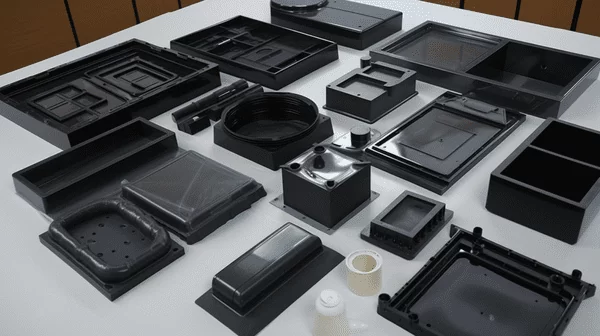
Chemical Sensitivity: While PVC thrives in various conditions, its sensitivity to certain chemicals mandates careful consideration when selecting it for specific applications.
Environmental Considerations: The journey of PVC, from production to disposal, is accompanied by environmental concerns, particularly surrounding the potential release of chlorine gas.
As we navigate the intricacies of PVC within the vacuum forming landscape, a nuanced understanding of its attributes equips manufacturers to harness its potential to create an array of products that align with specific needs. By acknowledging both the advantages and potential challenges, decision-makers can steer their course thoughtfully when opting for PVC in the realm of vacuum forming.
IV. Comparing PETG and PVC in Vacuum Forming
In the intricate dance of vacuum forming, two prominent players step onto the stage: PETG (polyethylene terephthalate glycol) and PVC (polyvinyl chloride). This section orchestrates a harmonious side-by-side comparison of these thermoplastics, unraveling their distinct characteristics within the realm of vacuum forming. As the spotlight shifts between transparency, impact resistance, chemical suitability, formability, cost, aesthetics, and customization, a tapestry of choices emerges, illuminating scenarios where one material takes precedence over the other.
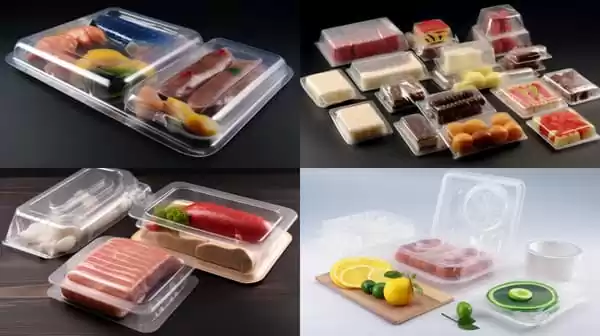
1. Transparency and Visual Clarity:
PETG: Boasting unparalleled optical clarity, PETG exhibits a consistent transparency that remains unmarred throughout the vacuum forming process. This attribute lends itself seamlessly to applications requiring unobstructed visual access, such as retail displays and product packaging. PVC: While PVC offers transparency, it may not rival the pristine clarity of PETG, making PETG the preferred choice for scenarios demanding impeccable visual fidelity.
2. Impact Resistance and Durability:
PETG: PETG stands tall with its exceptional impact resistance, ensuring vacuum-formed products remain unscathed by external forces. This durability ensures longevity, making it suitable for applications prone to wear and tear.
PVC: PVC also boasts commendable impact resistance, making it a viable option for durable vacuum-formed products. However, PETG's resilience might hold an edge in scenarios with more rigorous demands.

3. Chemical Resistance and Suitability for Food Storage:
PETG: With its resistance to chemicals, including moisture, PETG shines as a safe haven for food storage applications, preserving the integrity of consumables and safeguarding against contaminants.
PVC: While PVC's chemical resistance is notable, PETG's specialization in food storage underscores its superiority in maintaining the purity of contents.

4. Formability and Ease of Processing:
PETG: PETG's excellent formability allows it to adopt intricate shapes with finesse, making it a prime choice for projects requiring detailed designs and dynamic contours.
PVC: PVC's inherent flexibility lends itself to formability, enabling the realization of complex shapes and artistic creations within the vacuum forming process.
5. Cost-Effectiveness and Affordability:
PETG: PETG's exceptional properties come at a certain cost, making it relatively higher priced compared to some alternatives.
PVC: Renowned for its cost-effectiveness, PVC excels in scenarios demanding economical solutions, making it an attractive option for large-scale production runs.
6. Aesthetic Options and Customization Potential:
PETG: While PETG's transparent elegance reigns supreme, its customization options are more limited compared to PVC.
PVC: PVC's inherent versatility extends to aesthetics, allowing for vibrant coloration and intricate texturing, making it a canvas for creative expression.
Scenarios of Preferred Material Choice:
PETG takes the lead when optical clarity and chemical resistance are paramount, making it ideal for food storage and transparent display applications.
PVC excels in situations that demand cost-efficiency, flexibility, and aesthetic versatility, making it a strong contender for consumer goods, industrial components, and retail displays.

As the curtain falls on this comparison, manufacturers are equipped to navigate the labyrinth of vacuum forming with an informed understanding of where PETG and PVC shine, and where each material finds its rightful place.
V. Case Studies: Real-Life Applications
As we delve further into the world of vacuum forming, the efficacy of PETG and PVC becomes vividly apparent through a series of compelling real-life case studies. These instances underscore the diverse applications of these materials and highlight their unique strengths within distinct contexts.
PETG: Transparent Food Containers and Medical Equipment Components In the realm of the food storage containers, PETG emerges as a stalwart guardian of freshness and hygiene. PETG's exceptional transparency makes it an ideal choice for crafting crystal-clear food containers. These containers not only showcase the contents enticingly but also offer robust protection against contaminants, preserving the integrity of consumables. Beyond the culinary arena, PETG also finds its place in the domain of medical equipment components. Its inherent chemical resistance ensures the safe containment of medical supplies, exemplifying its vital role in maintaining sterile environments.
PVC: Consumer Goods, Retail Displays, and Industrial Components PVC's versatility shines in an array of applications, captivating both consumer and commercial sectors. Within the realm of consumer goods, PVC lends itself to the creation of durable and cost-effective products. From household items to recreational gear, PVC embodies an optimal balance between functionality and affordability. In the world of retail, PVC's flexibility and aesthetic adaptability come to the fore, orchestrating captivating retail displays that draw in shoppers with their visual allure. Transitioning to the industrial realm, PVC's robustness becomes evident in the fabrication of industrial components that withstand demanding conditions, all while adhering to budget constraints.
Case Study Summaries:
PETG in Food Storage: PETG's transparent brilliance harmonizes with the functional demands of food storage, culminating in containers plastic boxes that invite the eye while guarding the flavor and purity of consumables.
PETG in Medical Equipment: PETG's chemical resistance proves invaluable in medical settings, contributing to the creation of components that uphold stringent hygiene standards and safeguard the integrity of medical supplies.
PVC in Consumer Goods: PVC's cost-effective and versatile nature translates into a spectrum of consumer goods, seamlessly integrating affordability with functionality for a plethora of everyday essentials.

PVC in Retail Displays: The artistic canvas of PVC lends itself to crafting captivating retail displays, becoming an instrument of visual storytelling that entices and engages prospective buyers.
PVC in Industrial Components: In the industrial arena, PVC emerges as a stalwart, defying challenging conditions to forge robust components that contribute to machinery and systems' seamless operation.
These case studies illuminate the prowess of PETG and PVC, narrating their success stories in varied applications. Through these examples, the innate strengths of each material become palpable, guiding material selection in the complex world of vacuum forming machines.
VI. Factors to Consider When Choosing Between PETG and PVC
As the intricate decision-making process unfolds in the realm of vacuum forming, the choice between PETG and PVC emerges as a pivotal crossroads. This section delves into the array of considerations that guide this choice, unraveling a tapestry of factors that illuminate the path towards selecting the optimal material for the given project.
1. Project Requirements and Intended Use:
Central to the decision-making process is a thorough comprehension of the project's unique demands. Consider the purpose and function of the vacuum-formed product. Is it destined for food packaging, industrial components, or retail displays? Each material possesses attributes that may align more effectively with specific applications. Identifying the intended use serves as the foundation upon which the subsequent considerations are built.
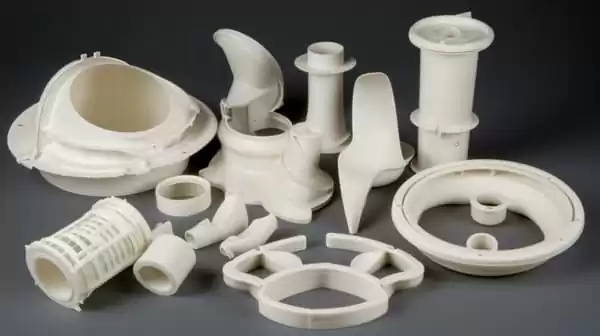
2. Material Properties and Desired Outcomes:
Understanding the intrinsic properties of PETG and PVC is fundamental. Assess the material's transparency, impact resistance, flexibility, and other characteristics in relation to the project's requirements. Does the project demand exceptional visual clarity, impact resilience, or pliability? The material's properties must harmonize with the desired outcomes to ensure the final product meets its intended objectives.
3. Budget Constraints and Cost Considerations:
Budgetary considerations stand as a crucial determinant in material selection. PETG and PVC each offer distinct economic profiles. While PETG's remarkable attributes may come at a certain cost, PVC's affordability provides an alternative avenue for cost-effective solutions, particularly for projects with substantial production volumes. Balancing material quality with financial feasibility is imperative in aligning with the project's financial parameters.
4. Aesthetic and Visual Requirements:
The aesthetic dimension plays a pivotal role, especially in applications where visual appeal is paramount. PETG's transparency and clarity make it an exceptional canvas for showcasing contents, while PVC's versatility in customization enables vibrant colors and textures. Assess the desired visual impact and consider how each material contributes to achieving the desired aesthetic outcome.
In summation, the decision between PETG and PVC in vacuum forming hinges upon a holistic evaluation of project specifics, material attributes, financial considerations, and aesthetic aspirations. By carefully navigating these factors, manufacturers can seamlessly steer their course towards the desired shape by selecting the material that aligns harmoniously with the project's vision and requirements.
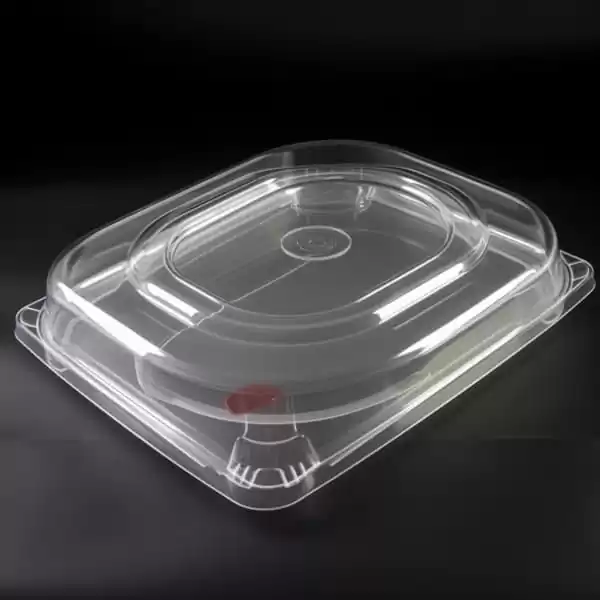
VII. Conclusion
In the dynamic arena of vacuum forming, the choice between PETG and PVC emerges as a pivotal determinant that shapes the trajectory of pressure formed projects. As we draw the curtains on this exploration, a succinct recap of the contrasting attributes of these materials underscores the significance of informed material selection, ultimately steering the course toward successful vacuum forming endeavors.
Recap of Main Differences Between PETG and PVC: Throughout this journey, we've traversed the terrain of transparency and visual clarity, impact resistance and durability, chemical suitability, formability, cost-effectiveness, and aesthetic versatility. PETG, with its exceptional optical clarity and chemical resistance, emerges as a stalwart guardian of transparency and hygiene. PVC, on the other hand, stands as a versatile chameleon, exuding flexibility, customization, and cost-efficiency.

